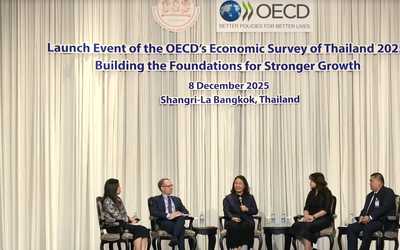Reshaping Thailand's Labor Market Structure: The Unified Forces of Technology and Trade
Abstract
Improvements in technology can have substantial impact on the labor market both directly and indirectly via changes in global trade patterns. This paper studies the potential impact of computerization and reshoring/relocating of operations by firms on Thailand's labor market. Specifically, the analysis is built upon Frey and Osborne's (2017) approach and incorporates additional measures of trade-base tasks. This is so that the revised machine-learning model can account for both the impact of technology and change in global trade patterns. Our results revealed that occupations that are mostly affected are service and sales workers, and agricultural and fishery workers. In the worst-case scenario, approximately one-third of existing jobs (12.14 million jobs) could be at risk. However, in real situations, new types of jobs may be created, workers may voluntarily adjust, or other factors could drive some overseas operations back to Thailand. Therefore, the potential outlook for Thailand's labor market may not be as severe as the model has predicted.









